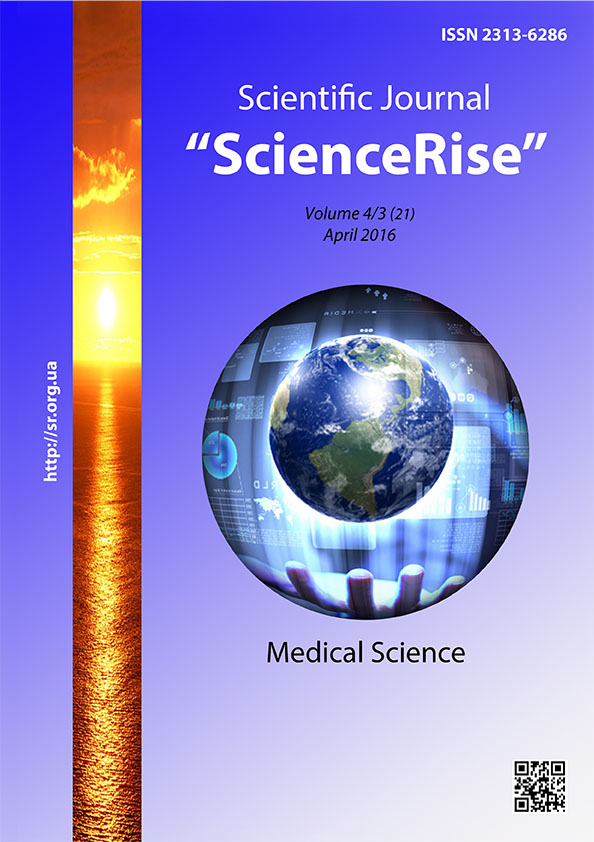Influence of the feeding type on the macro- and microelemental profile of infants
DOI:
https://doi.org/10.15587/2313-8416.2016.67691Keywords:
children, feeding type, microelements, allergic diseases, nerve-psychic development, spectrogramAbstract
In the work are given the results of screening of the mineral status of conventionally healthy infants that constantly live in Kharkov city and are on the different types of feeding.
Aim: to determine the macro and microelemental (ME) profile of children on the different types of feeding.
Methods: There were examined 50 children 5 month old who are on the different feeding types. Children were complexly examined by the narrow specialists and divided into groups: breast-feeding (BF), partially breast feeding (PBF), artificial feeding (AF). The evaluation of mineral profile was carried out on the base of determination of ME content in hair by the method of mass-spectrometry on «ElvaХ» apparatus (2008 year of issue).
Results: Analysis of the results demonstrated that the strontium, nickel, bromine and chlorine level in children on the different feeding types has not any reliable differences that can be considered as the norm variant and does not need correction. Profile of children on the other ME who receive the mixture in ration partially of completely was compared with profile of children on BF.
In children on AF was noted the decrease of magnesium level (0,029%), increase of iron (0,884%), chromium (0,714%), sulfur (0,943%) and phosphorus (0,036%) indices р≤0,05; was noted the imbalance of К/Са ratio 0,487 – 1,945%.
In children on PBF was registered the decrease of sodium level (0,019%) р˂0,05. Was noted the increase of Zn (0,905%), chromium (0,72%), sulfur (0,901%) and phosphorus (0,039%) р≤0,05. Potassium-calcium imbalance is less abrupt comparing with the group of children on artificial feeding - 0,367-1,266%.
There was observed the increase of chromium level in 40% of children on BF.
Conclusions: There was established that children on partially breast and artificial feeding do not have the adequate macro/microelement balance and are in the risk group of formation of pathologies of the cardio-vascular and osteo-muscular systems, allergic diseases that needs the certain correction at the stage of preclinical manifestations
References
Zdorov’ja kozhnogo – osnova blagopoluchchja derzhavy. Urjadovyj portal. Available at: http://www.kmu.gov.ua
Medik, V. A., Tokmachev, M. S. (2009). Statistika zdorov'ja naselenija zdravoohranenija. Moscow: Finansy i statistika, 368.
Bitarova, I. K., Kusova, I. T., Kumahov, A. A. (2016). Prichinno-sledstvennye svjazi mezhdu podhodami k organizacii grudnogo vskarmlivanija i kachestvom zdorov'ja detej. Sovremennaja nauka: aktual'nye problemy i puti ih reshenija, 1 (23).
Gnatejko, O. Z., Luk'janchenko, N. S., Pechenyk, S. O. et. al (2008). Rannja diagnostyka ta prognozuvannja ekologichno determinovanyh zahvorjuvan' u ditej. Suchasni problemi klinichnoi' pediatri, 4, 10.
Frolova, T. V., Ohapkina, O. V. (2010). Rol' mikroelementnogo profilju u systemi regional'nogo monitoryngu zdorov’ja dytjachogo naselennja. Perynatologija i pediatrija, 3, 66–71.
Bringhurst, F. R., Kronenberg, H. M. et al (2008). Disorders of Mineral Metabolism. Chep. 27. St. Louis, Mo: WB Saunders.
Giovannini, M., D’Auria, E., Caffarelli, C., Verduci, E., Barberi, S., Indinnimeo, L. (2014). Nutritional management and follow up of infants and children with food allergy: Italian Society of Pediatric Nutrition/Italian Society of Pediatric Allergy and Immunology Task Force Position Statement. Italian Journal of Pediatrics, 40 (1), 1. doi: 10.1186/1824-7288-40-1
Santos, J., Oliva-Teles, M. T., Delerue-Matos, C., Oliveira, M. B. P. P. (2014). Multi-elemental analysis of ready-to-eat “baby leaf” vegetables using microwave digestion and high-resolution continuum source atomic absorption spectrometry. Food Chemistry, 151, 311–316. doi: 10.1016/j.foodchem.2013.11.083
Avcin, A. P., Zhavoronkov, A. A., Rish, M. A., Strochkova, L. S. (1991). Mikrojelementozy cheloveka. Moscow: Medicina.
Frolova, T. V., Ohapkina, O. V. (2013). Rol' disbalansa mikro i makroєlementov v formirovanii hronicheskoj patologii u detej. Perinatologija i pediatrija, 4 (56),127–133.
Utenina, V. V., Pligina, E. V., Utenin, V. V., Barysheva, E. S., Gorlov, A. V. (2002). Disbalans mikrojelementov v organizme detej s jekologozavisimoj patologiej. Gigiena i sanitarija, 5, 57–59.
Bel'mer, S. V. (2009). Mikrojelementy, prebiotiki, kishechnaja mikroflora, immunitet. Pediatrija, 87 (3), 92–94.
Downloads
Published
Issue
Section
License
Copyright (c) 2016 Анастасія Григорівна Амаш, Ольга Володимирівна Охапкіна

This work is licensed under a Creative Commons Attribution 4.0 International License.
Our journal abides by the Creative Commons CC BY copyright rights and permissions for open access journals.
Authors, who are published in this journal, agree to the following conditions:
1. The authors reserve the right to authorship of the work and pass the first publication right of this work to the journal under the terms of a Creative Commons CC BY, which allows others to freely distribute the published research with the obligatory reference to the authors of the original work and the first publication of the work in this journal.
2. The authors have the right to conclude separate supplement agreements that relate to non-exclusive work distribution in the form in which it has been published by the journal (for example, to upload the work to the online storage of the journal or publish it as part of a monograph), provided that the reference to the first publication of the work in this journal is included.

